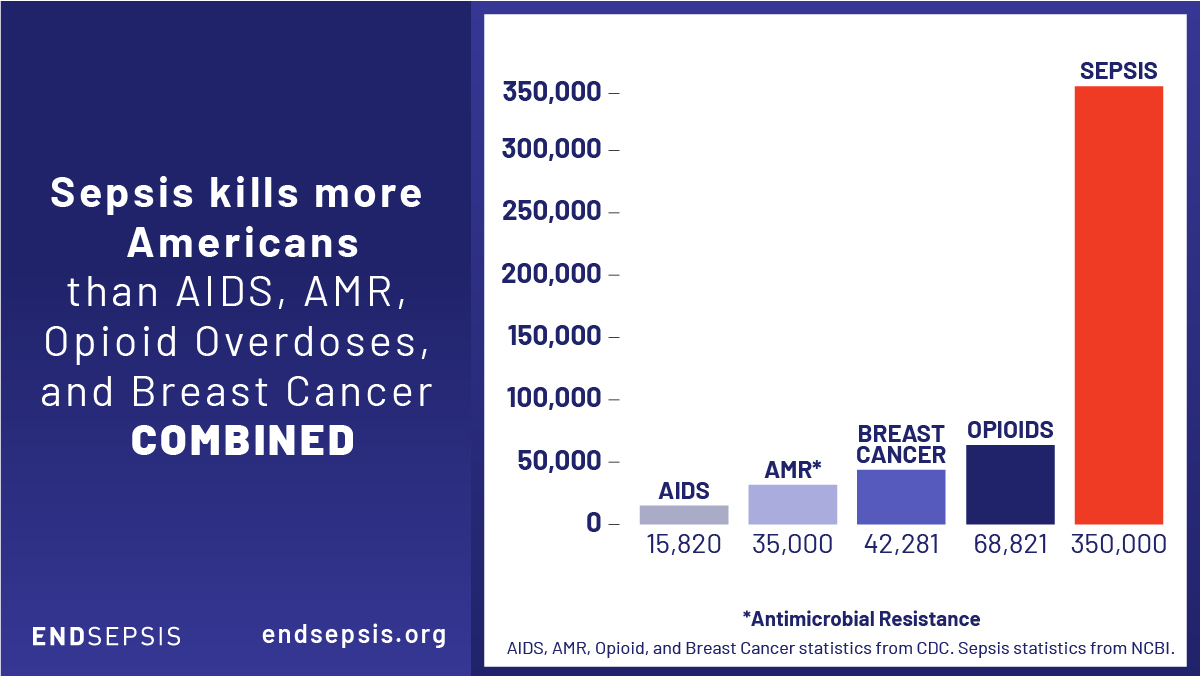
CDC Hospital Sepsis Program Core Elements
In August 2023 the Centers for Disease Control (CDC) introduced historic new guidelines aimed at helping hospitals reduce the staggering loss of lives to sepsis. They are the most significant effort ever undertaken by the federal government to address the sepsis crisis and they have the potential to save many thousands of lives. The Hospital Sepsis Program Core Elements offer guidelines to hospitals on how to develop and run effective hospital sepsis programs. They provide a framework for collaboration across departments, tracking, reporting, education and accountability and the commitment from hospital leadership to allocate resources to the effort.
Read the full Hospital Sepsis Program Core Elements.
Read The New York Times’ coverage of the Core Elements.
The Core Elements of Sepsis Hospital Guidelines are modeled on the successful Core Elements of Hospital Antibiotic Stewardship introduced in 2021 by the CDC.
END SEPSIS has called for such guidelines since Rory’s death. Data from Rory’s Regulations in New York shows that swift identification and treatment of sepsis within hospitals save lives. At least 1.7 million adults in America develop sepsis each year, leading to at least 350,000 sepsis-related deaths in the United States. These guidelines represent our biggest opportunity yet to drastically reduce deaths and disabilities from sepsis in this country.
Your Opportunity to Act!
 The Sepsis Core Elements are not mandatory. Their success depends on their widespread adoption by hospitals across the country. END SEPSIS is orchestrating a campaign to encourage all hospitals to adopt the new guidelines – and we need your help.
The Sepsis Core Elements are not mandatory. Their success depends on their widespread adoption by hospitals across the country. END SEPSIS is orchestrating a campaign to encourage all hospitals to adopt the new guidelines – and we need your help.
Ask your local hospitals to adopt the CDC’s Sepsis Hospital Program Core Elements! It only takes a moment to make the request and your simple request could save thousands of lives. Just follow the steps below!
-
-
- Download our letter to hospital leaders below encouraging them to utilize our sepsis toolkit in their school.
- Search your local hospital’s website to locate the name of the Chief Quality Officer and/or the Chief Medical Officer. Call or email to request their email address if it is not available online.
- Email our letter as an attachment. The letter template includes space for you to add the officer’s name and any personal statement you’d like to make about your experience with, or concerns about, sepsis.
- Sign up to become part of Sepsis Families United, our grassroots advocacy organization- and receive action alerts and updates.
-
Key Components of the Sepsis Guidelines
The CDC’s new sepsis guidelines for hospitals include the following key components:
- Leadership Dedication: Ensuring adequate allocation of human, financial, and information technology resources to support the program’s success.
- Accountability: Designating a program leader responsible for overseeing outcomes and establishing clear, measurable goals for the sepsis program.
- Multi-professional Collaboration: Engaging key stakeholders and partners across the organization to create a unified approach to combating sepsis.
- Action-oriented Approach: Implementing effective structures and processes to enhance the identification, management, and recovery from sepsis cases.
- Tracking and Measurement: Employing reliable methods to monitor and evaluate sepsis treatment and patient outcomes for continuous improvement.
- Transparent Reporting: Providing relevant partners with comprehensive information regarding sepsis treatment and outcomes to facilitate collaboration and knowledge sharing.
- Education and Training: Equipping healthcare professionals with comprehensive knowledge on preventing infections that lead to sepsis, recognizing its symptoms, treatment, and long-term implications.



